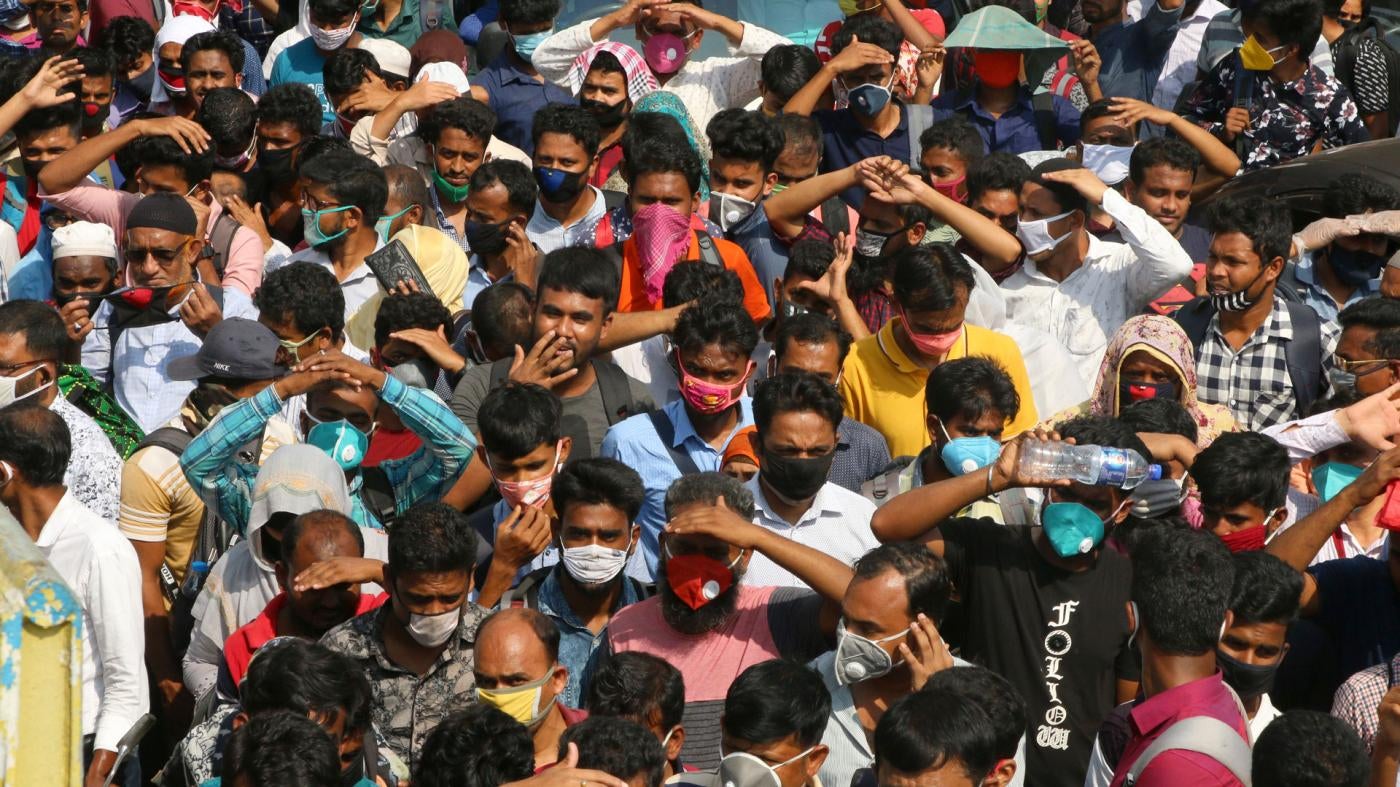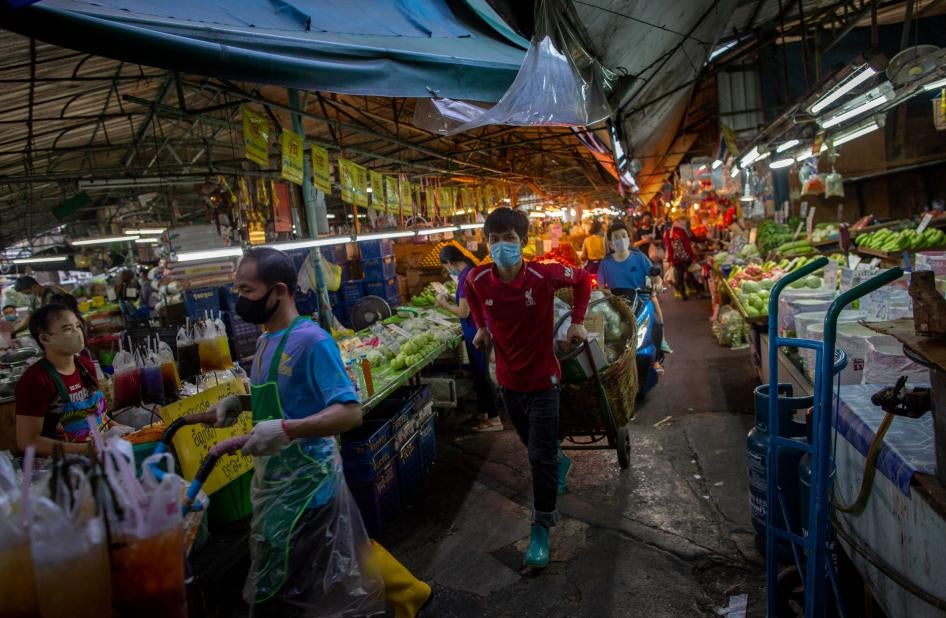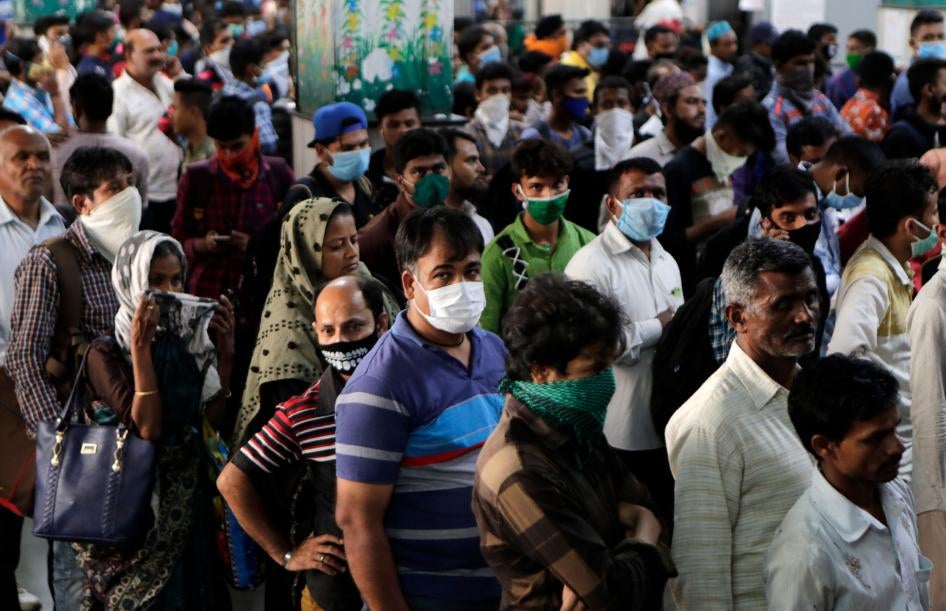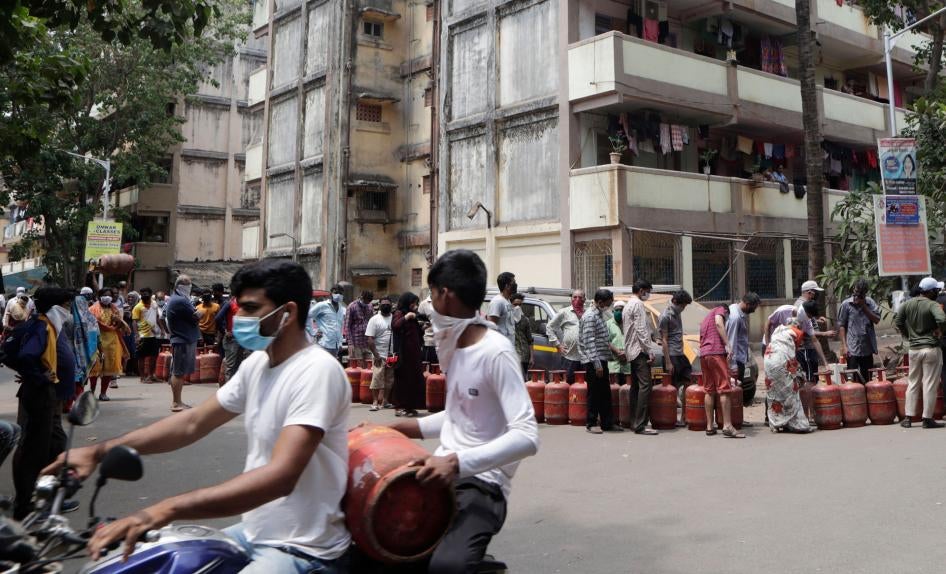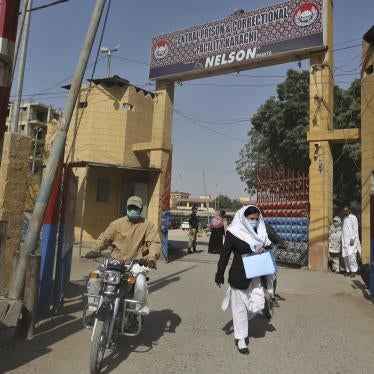What are your main concerns about the coronavirus in Asia?
Because testing is so poor in most of Asia, we have no visibility about how widespread infections are. Overcrowded cities where social distancing is challenging or impossible also have very poor public health infrastructure. There are very low ratios of doctors and nurses per capita, and very poorly resourced hospitals. And this is in places with massive poverty, where much of the health care is paid out-of-pocket. We all fear there may be an explosion of cases and death in much of the region.
How are governments reacting to the virus in ways that respect rights?
The right to life is the most fundamental right, and the right to health is central to prevent the spread of this disease and treat those who become ill. While it makes us uncomfortable to see limitations on free movement and assembly, if they are applied appropriately, stay-at-home orders can save a lot of lives. Singapore has taken the right to health seriously and is a leader in supporting workers during these times. India is in the middle of a 21-day lockdown, not simple when you have a population of over a billion people, many of whom live hand-to-mouth. Taiwan moved immediately to protect public health. South Korea corrected its first sloppy response and shut down large gatherings and ramped up testing. Because South Korea’s infection and death numbers have dropped dramatically, many people see it as a model.
How are governments reacting to the virus in ways that harm rights?
Many countries have had a failed public health response, often because they prioritized the economy over public health. For example, Imran Khan, Pakistan’s prime minister, said that no matter how bad the pandemic was he wouldn’t tell businesses to close because of the impact on the country’s many poor people. He has since reversed course, but he should have taken sensible public health measures earlier to protect people, while providing financial assistance so unemployed workers can survive the crisis. Thailand had a lot of cases early on, but the government fiddled with the numbers to keep tourism going. And now the island of Phuket is literally sealed – you can’t get in or out.
The region also has a lot of authoritarian leaders and dictatorships who could see this as an opportunity to consolidate or expand their power. In Cambodia, Hun Sen, one of the world’s longest-serving dictators, welcomed a cruise ship that couldn’t find a port willing to accept it and let people off without proper testing. He held press conferences, shook hands, hugged passengers, and criticized journalists who wore face masks. At the end of February, he essentially still said the coronavirus wasn’t real.
Hun Sen then proposed an emergency law giving him almost unlimited powers for an unlimited period of time. This includes martial powers. It also allows the government to read all emails and listen to all phone calls, which is not necessary for public health.
We’re seeing versions of this kind of response in Thailand, Cambodia, and China, where governments have tried to shut down criticism.
Across the world we have seen reports of frightening spikes in domestic violence, as locked-down families go through stress, claustrophobia, and economic woes. Victims are trapped at home with abusers, and governments have done little to address this. The Malaysian government took a particularly sexist approach, advising women to avoid nagging their husbands to “maintain a positive family relationship while working from home.”
What’s happening as Asia’s factories close?
Asia is basically the factory for the world. For years, slews of people from rural areas have migrated to big cities for work. Now in many areas there’s no more work because of the lockdowns. In late March, 80,000 people in Bangkok – fearing a lockdown or being out of work because of the pandemic – crammed into a single bus station to travel back to their home provinces in the country’s north and northeast. In India, tens of thousands of migrant workers returned to their villages; some had no choice but to walk home after the lockdown was announced and public transport stopped. Who knows how many had the virus, and how many other people got infected as a result? As there’s basically no testing in rural Asia, we won’t know how this played out in different countries for a very long time, if ever.
Garment workers in factories in places like Bangladesh, Cambodia, Myanmar, and Indonesia are mostly women living in crowded housing. But facing order cancellations from major brands, many factories have shut down without paying workers for work they already did. More than a million Bangladeshi garment factory workers have been laid off due to coronavirus, most without severance.
From a public health perspective, these factories should close. But the consequence of closing factories without necessary social welfare protections is that workers will struggle to eat, as will their families that they provide money for. This will be a public health crisis, too. The challenge is implementing effective public health protections while mitigating the foreseeable consequences that vulnerable people will face.
Governments should work with donors, clothing brands, and international financial institutions like the World Bank to ensure workers and their families an adequate standard of living. Brands should at least pay for goods already made so workers get paid.
China’s shadow looms large over COVID-19, first by withholding information about its seriousness, but also in its aggressive approach to halting the virus’ spread. What is your reaction to this?
We’ve now seen the costs of a one-party dictatorship during a public health crisis. Most experts agree that the number of infections and deaths in China are grossly understated. If the Chinese government’s first reaction to the crisis in Wuhan had been to be open and transparent instead of censoring independent news reporting, and if it had shared information with the public instead of punishing doctors who sounded the alarm, the consequences in China and globally would be dramatically lower. It’s possible we would not have had a global pandemic.
Once this crisis is over, President Xi Jinping and the Chinese Communist Party leadership need to be held accountable.
Quarantines can be imposed, but they must be necessary and proportionate. People need food, medicine, and other support. The quarantine imposed by China over roughly 60 million people was overly broad with little respect for rights. Despite stringent censorship, there have been many reports about people under quarantine having difficulties obtaining medical care and necessities, and chilling stories of deaths and illnesses have emerged.
At the same time, we strongly condemn the racist anti-Asian rhetoric United States President Donald Trump and Secretary of State Mike Pompeo have used when speaking of the virus, rhetoric used to score cheap political points for their xenophobic politics. We also condemn the racism experienced by Asians in many countries around the world.
How prepared are Asia’s countries in terms of infrastructure to deal with COVID-19?
Asia encompasses all levels of infrastructure and economic development. You have Japan, Singapore, Taiwan, and South Korea with fully developed economies. You have middle income countries, such as Malaysia and Thailand, that have pretty good infrastructure in urban areas, but less so in rural areas. Then there are countries like China, India, Pakistan, Bangladesh, and Indonesia, the most heavily populated countries in Asia, where the elite are able to access good medical care but where poor or middle-class people are left with very weak public health infrastructure.
Afghanistan faces particular challenges, with a fragile health system and ongoing fighting undermining the government’s ability to respond to the pandemic.
But the main hurdle in this crisis, which is not unique to Asia, is the lack of testing for COVID-19. There has been little testing in some countries in Asia.
Who within Asia is most at risk to the virus?
Older people and people with underlying chronic illness are most severely affected. If they become infected, you will see higher rates of severe illness and death. But more broadly, the impact is felt disproportionately among the poor and socially marginalized. This can include ethnic and linguistic minorities who may not have access to information or health care. It also includes refugees, prisoners, people with disabilities – especially those who are locked up or shackled – and many others.
After the Myanmar army’s ethnic cleansing campaign in 2017, there are now around a million Rohingya Muslim refugees living in camps near Cox’s Bazar in Bangladesh. Even before the COVID-19 crisis, impoverished refugees lived cheek-to-jowl, their children denied an education. They struggle to maintain adequate clean water, sanitation, shelter, and health standards, let alone social distancing. Additionally, Bangladesh insists on preventing Rohingya from having mobile phone SIM cards and restricts internet in the camps, hindering the ability of refugees to access information on COVID-19. We’re just holding our breath.
Many Asian countries have a high prisoner population with overcrowded and unsanitary prisons and jails. The Philippines has a 464 percent overcapacity rate, the most overcrowded prison system in the world – some of its prisons are over capacity by 500 percent. We have called on a number of governments to both provide adequate health care and mental health care to detainees. We have also called on them to release those charged with minor offenses, prisoners with underlying health conditions, and others, to protect them and reduce the risk of transmission
